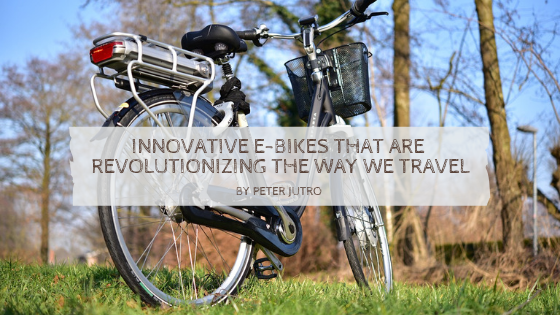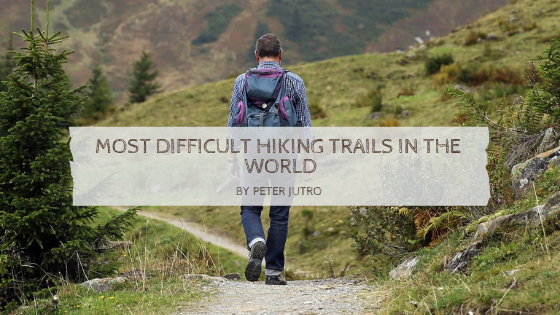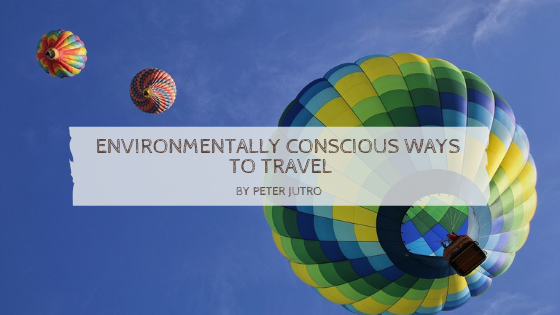
Innovative E-Bikes That Are Revolutionizing The Way We Travel
If you’ve ever tried driving through the heart of Los Angeles, the Washington, DC area, or similarly congested places, you’re probably all-too familiar with the rage-inducing crawl of inner city traffic. Unfortunately for many, living and working in these areas means braving the bumper-to-bumper slog on a daily basis, especially since public transportation options in US cities can be inadequate. Bicycles have long served as an energy-efficient alternative to car travel in urban areas. Recent times, however, have seen a surge in the popularity of an updated take on the traditional bicycle.
Like their analog ancestors, electronic bikes, or e-bikes, allow riders to travel green and bypass heavy traffic, while also reaping the benefits of physical activity. But in addition to pedals, e-bikes come equipped with electric motors capable of maintaining speeds as high as 30 mph. While they’ve been a relatively common phenomenon in Europe for decades, US adoption of e-bikes has spiked only recently, with sales rising by 80% (260,000 units) between 2016 and 2017.
For those in the market for an e-bike–or those simply interested in learning more–here’s a summary of a few top brands’ innovative features and qualities.
Ecotric
Beachgoers looking to speed up travel on the sand might prefer Ecotric’s Fat Tire Beach Electric Bike. Outfitted with 4-inch tires, Ecotric’s bike is made for traversing a range of terrains, from sandy beaches and dirt trails to snow. The bike includes both pedal-assisted and fully motorized modes of travel, and has a max speed of 20 mph. In addition, Ecotric offers a 30-day home trial option, after which any unsatisfied customers can get a refund or exchange their bikes for another type.
Elby
Elby’s flagship 9-Speed Electric Bike is designed to embody “innovative style, comfort and power.” Many of its core features aim to compensate for the shortcomings of traditional bikes; it’s battery supports up to 80 miles of fully electric travel and it’s rear section includes storage racks for saddlebags. Other features of note include deflation-resistant tires, a high-intensity headlight, and Tektro hydraulic disk brakes.
Bintelli
A sixteen-year veteran of the powersports industry, Bintelli prides itself on incorporating extensive feedback from dealers in building a brand of e-bikes that “sets itself above the rest.” Bintelli bikes arrive 95% assembled, minimizing the potential for lost or missing parts. Bike variations include a three-wheeler with extra storage, an e-bike/scooter hybrid, and a folding bike for space-efficient storage.
As the future shifts toward energy efficiency, gas-guzzling cars may become increasingly impractical. By acquiring the right e-bike now, riders may be able to limit energy consumption, cut travel times, and, depending on local laws governing where e-bikes can be driven, sidestep the never-ending traffic jam that can characterize urban driving.

Most Difficult Hiking Trails in the World
It’s fitting in a way that a few of the world’s most picturesque sights–backdrops of a magnificence that photos can never fully communicate–are hidden away, guarded by their isolation. They can be nestled deep within a mountain range, or at difficult altitudes, or above inclines so steep that managing them is a matter of considerable difficulty. Unfortunately for the faint-hearted, there is only one way to tour these places, and it’s not the proverbial walk in the park. Those who brave our planet’s most precarious footpaths undertake hikes like no others. Often grueling, these are the trails on which even the fittest hikers often hesitate to tread, and where missteps could result in serious injury or even death. But for those with strength, persistence, and hiking expertise, the experience of conquering these treacherous trails is second to none. I have been fortunate enough to explore many remarkable and often isolated places, but these are three I have not yet tried; they have long been on my proverbial ‘bucket list’.
The Snowman Trek, Bhutan
Few trails are more rigorous than Bhutan’s 200-mile Snowman Trek. Bhutan is in any case, as isolated a country and one might find, but the trek is often said to rival Mount Everest in difficulty, as the entirety of the month-long trek takes place above an altitude of 13,000 feet. Altitude sickness is common along this oxygen starved path, whose height often reaches about 16,000 feet. Hikers who manage the trip are rewarded with a pristine Himalayan experience, and exposure to Bhutan’s Buddhist temples. Well below you will sprawl a stunning expanse of green forests veined with beautiful waterways.
The Lost City, Colombia
If climbing steep, winding paths filled with slippery rocks, and wading through rivers of mud in search of a city forgotten for millenia sounds a bit inconvenient for your tastes, you may not be ready to conquer Colombia’s Lost City (Ciudad Perdida) trek. But if you are willing to endure heat, humidity, mud and bugs, deep in a South American rainforest lies the skeleton of a remarkable ruined metropolis. Dubbed Teyuna by the natives, the city once housed thousands of Tairona people, and is believed to be 650 years older than Machu Picchu. It’s a unique sight, and the 5 to 7 day trip there is a unique hike that grants adventurous travelers their fill of both challenge and beauty. One even has the chance to be pulled across a raging river in a birdcage-like gondola that fortunately, is far sturdier than it looks.
Bright Angel Trail, Arizona
Descending into the Grand Canyon on foot under a shadeless, sizzling Arizona sun is challenging enough, but add in razor-sharp drops and a narrow trail that is, at the very least, physically draining, and top it all off with temperatures that can exceed 110 degrees Fahrenheit, and you’ve got a recipe for heat exhaustion; this is the Bright Angel Trail. The 9.5 mile trip down can be completed in four to five hours, and the return can take twice that. There’s an entire staff of the National Park Service–called Preventative Search and Rescue (PSAR)–whose main protective task is to dissuade unprepared hikers from attempting Bright Angel Trail. Despite PSAR’s efforts, every year more than two hundred hikes have to be rescued from the trail. For seasoned and well-prepared hikers, however, the path offers an unbeatable experience, and unmatchable panoramic views of the canyon. Be sure to follow the park’s instructions, including taking adequate water, not trying the round trip in one day in summer, and to hike during the cooler hours. Finally, learn and follow instructions regarding the mule trains you will encounter on the trail.
It is vital that you carefully prepare before attempting to embark on any of these trails. They are recognized as grueling for good reason. Even the most experienced hikers prepare thoroughly and take great care when undertaking one of them. So, if you are interested in taking on the challenge, make sure you are well prepared for any obstacles you might face. You will be rewarded with the satisfaction of safely achieving a rare and extraordinary undertaking.

Environmentally Conscious Ways To Travel
For many people, the occasional getaway isn’t just a luxury; it’s an absolute must. The thrill of uncertainty–of new scenery and fresh faces–promises to break us from the mundane patterns of everyday life. Amid the ecstasy of departure, it’s easy to lose sight of simple responsibilities, like reducing our carbon footprint. But no matter where we end up, the impact that our daily activities have on the environment doesn’t change.
Some might be tempted to abandon eco-friendly habits out of convenience, or to save money. Luckily for them, staying green while traveling is oftentimes easier and cheaper than traveling wastefully. Here are a few tips on how to have the adventure of a lifetime, while keeping the environment in mind.
Packing and Travel Prep
Traveling green doesn’t start once you’re on the road; it begins with knowing what to pack, and how to prepare your home for an extended period of emptiness. Knowing what to bring along is as simple as considering what you’ll actually need, and keeping luggage as light as possible: the less weight your form of transport has to carry, the less fuel it will use. A refillable water bottle and a cloth shopping bag are good additions as well. Home prep steps include recycling the packaging of any new products you bought for the trip, unplugging electronics and switching heat/AC temperatures from comfort settings to just those necessary to protect your home from frost or from overheating. If you have a newspaper subscription, putting it on hold will save paper and also make it less obvious that the home is empty. Most home water heaters also now have a “vacation” setting.
Transportation Options
Buses generally emit the least amount of carbon per passenger. According to a report by the Union of Concerned Scientists, the average car trip produces 1.17 pounds of carbon dioxide per passenger per mile, while traveling by bus produces a full pound less. At .41 pounds per passenger mile, trains are an eco-friendly option as well. Plane travel is by far the most environmentally expensive option, producing 1.83 pounds of carbon dioxide per passenger mile. This means that when possible, It’s best to travel by bus or train. If traveling by air is the only viable option, aim for non-stop flights. Certain airlines have modified their planes to be more fuel efficient; a quick google search can reveal an airline’s environmental policies.
Once You’re There
Most hotels practice some form of conservancy, whether it’s developing an efficient recycling program, or any number of energy-reducing practices. No matter where you end up staying, it helps to stick to tried-and-true green habits, like keeping showers short, and turning off the TV and lights when you leave. When you’re out, stay green by using public transportation, shopping at family-owned stores, and eating locally sourced food.
It is very possible to enjoy your vacation while maintaining a low carbon footprint. Not only will you be saving yourself money with an environmentally-friendly trip, you also be helping the environment.
About Peter Jutro
Peter Jutro has a passion for travel and exploration, as well as cartography and the history of maps. Having traveled extensively over the past 50 years, Peter has had the opportunity to learn a great deal about people and the world as a whole. He is a firm believer in his wife Ellen’s adage that “the more you travel, the bigger the world gets.”
Whether traveling for business or pleasure, Peter Jutro is always excited about the opportunities that a new place and culture have to offer. Some of his fondest memories include his honeymoon in Switzerland, a country that has felt like a second home to his family, as well as a research trip to Central Siberia where he had the exciting opportunity to work with the Russians on environmental issues.
An intently curious individual, Peter Jutro is continually looking to explore what exists around the world. While he may be learning about a culture’s history, studying its environmental concerns, or he and his wife might be hiking and scuba diving in one of a number of countries for pleasure, Peter always appreciates how travel serves as a catalyst for education, personal growth, and developing friendships.
Biodiversity In The Florida Keys
Peter Jutro is currently in the process of writing a book about Lignumvitae Key, an island in the Florida Keys. He has been involved in research and in the preservation of this area since the early 1970’s. Dr. Jutro finds it an incredibly fascinating place for historical, political, and biological reasons. The Lignumvitae Key Aquatic Preserve encompasses 7,000 acres of seagrass meadows, deep water channels, hard bottom communities, and mangrove wetlands. The island itself includes the last pristine lowland tropical forest remaining in the United States.
Berlin: A Family Connection
Of German-Jewish descent, Peter Jutro has an extremely personal connection to Berlin, the city from which his family emigrated to the United States. Just prior to World War II, his late father spent several months as a concentration camp prisoner in a Berlin suburb. Recently, Peter was excited to find a journal among his family’s historical documents; This journal had been written in by his father in 1939, and detailed life in the concentration camp. This inside look at the concentration camp, as well as the close personal connection with the author, makes this find a unique historical document. Peter is currently in the process of transcribing and translating the manuscript into English so that his father’s experiences can be broadly shared.
Professional Background
Peter Jutro dedicated more than 35 years to Federal service, serving in a variety of positions involved with Environmental Policy and National Security. Most recently, Dr. Jutro was Acting Associate EPA Administrator for Homeland Security. Before that, he was Deputy Director for Science and Policy and Director of the Washington office of EPA’s National Homeland Security Research Center. This group is responsible for the research needed to provide the science and technology behind the EPA’s disaster mandates, which fall primarily in the areas of decontamination, water protection, risk assessment, and resilience. His earlier work in academia, on Congressional Staff, and with Federal Agencies, dealt largely with risk assessment, global climate change and biological diversity.
